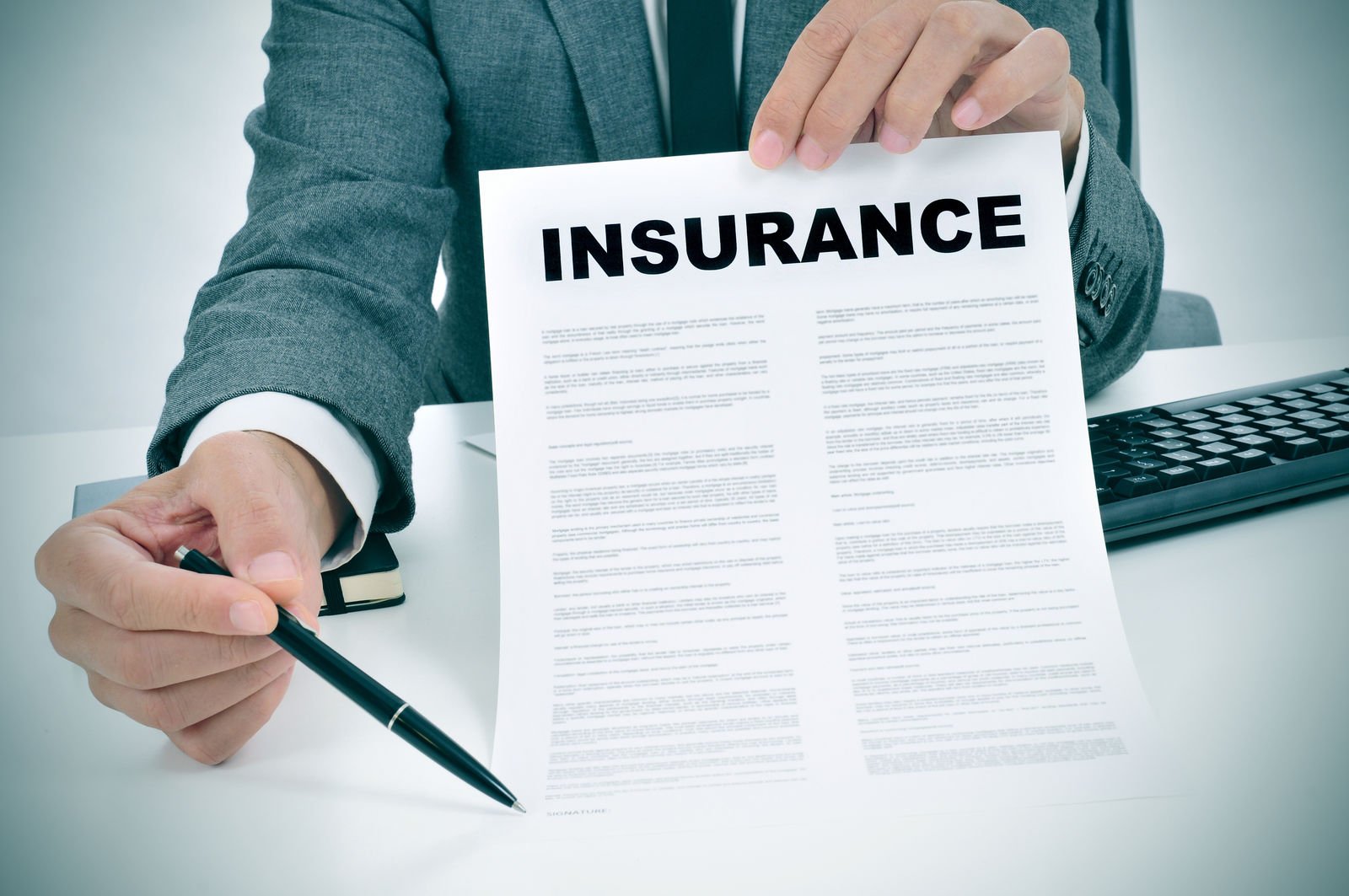Car Insurance Definitions
Knowing car insurance definitions for common terms and coverages is important to ensure you know what your policy covers. For example, understanding car insurance coverage requirements in your state is necessary. While Florida requires 10/20/10 in liability coverage, Texas mandates 30/60/25 in liability.
Read more Secured with SHA-256 Encryption





Table of Contents
Table of Contents


Published Insurance Expert
Melanie Musson is the fourth generation in her family to work in the insurance industry. She grew up with insurance talk as part of her everyday conversation and has studied to gain an in-depth knowledge of state-specific insurance laws and dynamics as well as a broad understanding of how insurance fits into every person’s life, from budgets to coverage levels. Through her years working in th...
Melanie Musson


Licensed Insurance Agent
Jeffrey Manola is an experienced insurance agent who founded TopQuoteLifeInsurance.com and NoMedicalExamQuotes.com. His mission when creating these sites was to provide online consumers searching for insurance with the most affordable rates available. Not only does he strive to provide consumers with the best prices for insurance coverage, but he also wants those on the market for insurance to ...
Jeffrey Manola
Updated May 2024
- Understanding common terms for coverages and policy details will ensure you are familiar with your policy
- There are multiple different coverage terms, and understanding what the different coverages are will help you choose the perfect policy for your needs
- If you are uncertain what a term on your insurance policy means, make sure to speak to your insurance company
Car insurance terms can be confusing when you are reading through your policy options, as companies will throw around terms like additional insured and MedPay and not always explain what they mean. Familiarizing yourself with common car insurance definitions can help you make an informed choice when choosing your coverages and car insurance company.
If you want help understanding your car insurance policy, continue reading and we’ll explain car insurance terms that drivers should be aware of, from car insurance coverage terms to policy terms.
Understanding Car Insurance Coverage Types
There are multiple different types of car insurance, which can make it hard to know what you need on your policy and which coverages you can skip. Car insurance types are some of the most important car insurance terms to know. We’ve defined all the different coverage types below, so you can make an informed decision about what insurance you need.
Collision Insurance
Collision insurance is car insurance coverage that will pay for your car’s repairs, up to your policy’s limit, if you crash into another car or an object. Examples of what collision car insurance covers include objects such as fence posts, mailboxes, telephone poles, and other stationary items of others’ properties that would need to be repaired or replaced if damaged.
- Car Insurance Definitions
- Is car insurance tax deductible?
- What is the difference between car make vs. model?
- Car Insurance Pleasure Driving: Explained Simply
- Can I change my car insurance company mid-policy?
- Force-Placed Car Insurance: Explained Simply
- Car Insurance Binder: Explained Simply
- Car Insurance Deductible: Explained Simply
- Road Rage: Definition and Consequences
- What does a car insurance certificate look like?
- Zero-Deductible Car Insurance: Explained Simply
- What does a $500 car insurance deductible mean?
- Car Insurance Policyholder: Explained Simply
- How do I find out when my car insurance payment is due?
- Credit Life Insurance for Cars: Explained Simply
- Village Car Insurance: Explained Simply
- Car Insurance PIP Waiver: Explained Simply
- Rebuilt Car Title: Explained Simply
- Agreed Value Car Insurance: Explained Simply
- Combined Single-Limit Car Insurance: Explained Simply
- Car Insurance Piggybacking: Explained Simply
Collision insurance is not required by any states, but it is required by lenders if you have a lease or loan on your vehicle, as it protects their assets. If you don’t have a lease or loan, collision insurance is still good coverage to purchase. Otherwise, you will be stuck paying for your car’s repairs yourself if you cause an accident.
Comprehensive Insurance
Comprehensive insurance is car insurance coverage that pays for your car’s repairs if it is damaged in the following situations:
- Your car is damaged by hitting an animal.
- Your car is damaged by an object falling on your car.
- Your car is damaged by weather or natural disasters.
- Your car is damaged by vandalism.
- Your car is stolen.
Like collision insurance, states do not require drivers to carry comprehensive insurance to drive legally, but lenders do require those with a lease or loan to have this coverage. You can read our comprehensive car insurance guide to learn more about this coverage.
Read more: Credit Life Insurance for Cars: Explained Simply
Gap Insurance
Gap insurance is a coverage that will help pay the difference between the depreciated value payout you get for your totaled car and what is left on your lease or loan. This way, you aren’t stuck paying off a lease or loan for a car that you no longer own.
Liability Insurance
Liability car insurance coverage is coverage that pays for other parties’ accident bills if you cause an accident that damages others’ property or causes others bodily injury. Liability insurance consists of two sections: bodily injury and property damage liability insurance. Bodily injury liability insurance pays for others’ medical bills, while property damage liability insurance pays for others’ property repair bills.
Because liability insurance protects other drivers if you cause an accident, almost every state requires drivers to carry this coverage. Below, you can see which states require liability insurance.
Car Insurance Coverage Requirements by State
| State | Coverages | Limits |
|---|---|---|
| Alabama | Bodily injury and property damage liability | 25/50/25 |
| Alaska | Bodily injury and property damage liability | 50/100/25 |
| Arizona | Bodily injury and property damage liability | 25/50/15 |
| Arkansas | Bodily injury and property damage liability, personal injury protection (PIP) | 25/50/25 |
| California | Bodily injury and property damage liability | 15/30/5 |
| Colorado | Bodily injury and property damage liability | 25/50/15 |
| Connecticut | Bodily injury and property damage liability, uninsured/underinsured motorist (UM, UIM) | 25/50/25 |
| Delaware | Bodily injury and property damage liability, personal injury protection (PIP) | 25/50/10 |
| Florida | Property damage liability, personal injury protection (PIP) | 10/20/10 |
| Georgia | Bodily injury and property damage liability | 25/50/25 |
| Hawaii | Bodily injury and property damage liability, personal injury protection (PIP) | 20/40/10 |
| Idaho | Bodily injury and property damage liability | 25/50/15 |
| Illinois | Bodily injury and property damage liability, uninsured/underinsured motorist (UM, UIM) | 25/50/20 |
| Indiana | Bodily injury and property damage liability | 25/50/25 |
| Iowa | Bodily injury and property damage liability | 20/40/15 |
| Kansas | Bodily injury and property damage liability, personal injury protection (PIP) | 25/50/25 |
| Kentucky | Bodily injury and property damage liability, personal injury protection (PIP), uninsured/underinsured motorist (UM, UIM) | 25/50/25 |
| Louisiana | Bodily injury and property damage liability | 15/30/25 |
| Maine | Bodily injury and property damage liability, uninsured/underinsured motorist (UM, UIM), medical payments (Medpay) | 50/100/25 |
| Maryland | Bodily injury and property damage liability, personal injury protection (PIP), uninsured/underinsured motorist (UM, UIM) | 30/60/15 |
| Massachusetts | Bodily injury and property damage liability, personal injury protection (PIP) | 20/40/5 |
| Michigan | Bodily injury and property damage liability, personal injury protection (PIP) | 20/40/10 |
| Minnesota | Bodily injury and property damage liability, personal injury protection (PIP), uninsured/underinsured motorist (UM, UIM) | 30/60/10 |
| Mississippi | Bodily injury and property damage liability | 25/50/25 |
| Missouri | Bodily injury and property damage liability, uninsured/underinsured motorist (UM) | 25/50/25 |
| Montana | Bodily injury and property damage liability | 25/50/20 |
| Nebraska | Bodily injury and property damage liability, uninsured/underinsured motorist (UM, UIM) | 25/50/25 |
| Nevada | Bodily injury and property damage liability | 25/50/20 |
| New Hampshire | Financial responsibility (FR) only | 25/50/25 |
| New Jersey | Bodily injury and property damage liability, personal injury protection (PIP), uninsured/underinsured motorist (UM, UIM) | 15/30/5 |
| New Mexico | Bodily injury and property damage liability | 25/50/10 |
| New York | Bodily injury and property damage liability, personal injury protection (PIP), uninsured/underinsured motorist (UM, UIM) | 25/50/10 |
| North Carolina | Bodily injury and property damage liability, uninsured/underinsured motorist (UM, UIM) | 30/60/25 |
| North Dakota | Bodily injury and property damage liability, personal injury protection (PIP), uninsured/underinsured motorist (UM, UIM) | 25/50/25 |
| Ohio | Bodily injury and property damage liability | 25/50/25 |
| Oklahoma | Bodily injury and property damage liability | 25/50/25 |
| Oregon | Bodily injury and property damage liability, personal injury protection (PIP), uninsured/underinsured motorist (UM, UIM) | 25/50/20 |
| Pennsylvania | Bodily injury and property damage liability, personal injury protection (PIP) | 15/30/5 |
| Rhode Island | Bodily injury and property damage liability | 25/50/25 |
| South Carolina | Bodily injury and property damage liability, uninsured/underinsured motorist (UM) | 25/50/25 |
| South Dakota | Bodily injury and property damage liability, uninsured/underinsured motorist (UM, UIM) | 25/50/25 |
| Tennessee | Bodily injury and property damage liability | 25/50/15 |
| Texas | Bodily injury and property damage liability, personal injury protection (PIP) | 30/60/25 |
| Utah | Bodily injury and property damage liability, personal injury protection (PIP) | 25/65/15 |
| Vermont | Bodily injury and property damage liability, uninsured/underinsured motorist (UM, UIM) | 25/50/10 |
| Virginia | Bodily injury and property damage liability, uninsured/underinsured motorist (UM, UIM) | 25/50/20 |
| Washington, D.C | Bodily injury and property damage liability | 25/50/10 |
| West Virginia | Bodily injury and property damage liability, uninsured/underinsured motorist (UM, UIM) | 25/50/25 |
| Wisconsin | Bodily injury and property damage liability, uninsured/underinsured motorist (UM, Medpay) | 25/50/10 |
| Wyoming | Bodily injury and property damage liability | 25/50/20 |
If liability insurance is not required in your state, you will have to provide proof of financial ability to pay off huge bills after an accident. Generally, it is easier and cheaper just to get liability insurance.
Medical Payments (Medpay) Insurance
MedPay helps cover your and your passenger’s medical bills if you are injured in a car accident, regardless of who caused the car accident. MedPay is required in some states, but the maximum amount that MedPay covers is usually low, as it is intended as supplemental coverage that helps cover what health insurance doesn’t.
Personal Injury Protection (PIP) Insurance
Personal injury protection insurance helps pay for your and your passenger’s medical bills if you are injured in a car accident, regardless of who caused it. PIP will also help pay for related costs to your injury, such as childcare costs or lost wages. It will also help cover funeral costs.
PIP is required in some states, just like MedPay. If it is not required in your state and you have good health insurance, then you may want to choose to forgo purchasing PIP unless you want a little extra protection.
Rental Car Reimbursement Insurance
Rental car insurance will help pay for a rental car if repairs take more than a day or two for your car after a covered claim. This way, you aren’t stuck without a car for an extended period of time while yours is being repaired.
Roadside Assistance Insurance
Roadside assistance is a 24/7 program that helps drivers with a number of common breakdowns. Some of the car problems that most roadside assistance programs will help with include the following:
- If you lock yourself out of the car.
- If you run out of gas.
- A dead battery.
- A flat tire.
Roadside assistance will also tow you to the nearest repair facility if they are unable to get your car working again.
Uninsured Motorist Insurance
Uninsured motorist coverage pays for your accident bills up to the policy limit if you are hit by a driver without insurance. Uninsured motorist insurance may not cover hit-and-runs in all states, so make sure to check with your insurance company.
Underinsured Motorist Insurance
Underinsured motorist insurance pays for the remainder of your accident bills, up to the policy limit, if the driver who hit you doesn’t have enough insurance to cover all your bills. Underinsured motorist insurance may be sold together with uninsured motorist coverages or sold separately.
Free Insurance Comparison
Compare Quotes From Top Companies and Save
Secured with SHA-256 Encryption
Understanding Car Insurance Policy Terms
Car insurance terminology goes beyond car insurance coverage, and there are many other car insurance terms and definitions that you will see when signing up for a policy. We’ve covered the main definitions that will appear on car insurance policies below to help you develop car insurance understanding.
Additional Insured
An additional insured is a driver on the policy that is not the policyholder. For example, a teenager on a parent’s policy would be called an additional insured, as they are insured by the policy but are not the ones who bought and paid for the insurance. Additional insured drivers do not have the power to make changes to the insurance policy.
Covered Incident
A covered incident is an accident that is covered under your insurance policy, meaning your insurance will pay for repairs up to the policy limit. A non-covered incident means that insurance won’t pay for your repairs, as the accident or damage isn’t covered by your insurance policy.
Deductible
A car insurance deductible is an amount you agree to pay after a covered accident towards your car’s repairs. So if you have a $500 deductible and $2,000 worth of damages to your car, insurance will pay you only $1,500, as you are responsible for the remaining $500. The plus side of deductibles is that having a deductible lowers your insurance rates, as insurance companies are taking on less of a financial risk.
Read more: Zero-Deductible Car Insurance: Explained Simply
Effective Date
The effective date is the date that your car insurance policy becomes active and you are covered. The effective date doesn’t have to be the date you sign up for insurance, as you can set it to be effective a week or two from when you sign up. It is important that you set the effective date of your new insurance policy to be before the end date of your old policy, as otherwise, you may face an insurance lapse.
Exclusion
An exclusion is an event that your car insurance won’t cover. For example, uninsured motorist insurance may have an exclusion in some states that won’t cover hit-and-run accidents.
Full Coverage
Full coverage car insurance is a policy that contains state-mandated liability insurance, as well as comprehensive and collision insurance.
Limit
The limit refers to the maximum amount that insurance will cover after an accident. If you have a $20,000 limit, for example, and have $2,500 worth of damages, insurance will only cover $20,000 of repairs.
Primary Use
Primary use refers to what you primarily use your car for every day. This could be pleasure, business, or commuting. Insurance companies ask this to assess your risk and what type of insurance you need. For example, you may need commercial insurance if your car is primarily used for work rather than personal use.
Premium
A car insurance premium refers to the car insurance rate that you pay for insurance coverage. The premium could be a monthly amount that you pay for coverage, or you may pay your premium in full ahead of time. Generally, insurance companies offer a car insurance discount if you pay in full.
Case Studies: Examples of Car Insurance Definitions
Case Study 1: The Comprehensive Coverage Conundrum (SafeDrive Insurance)
John, a policyholder with SafeDrive Insurance, experienced a severe hailstorm that resulted in extensive damage to his vehicle. When he filed a claim for the repairs, he was informed that his policy did not cover the specific type of damage caused by the hail. John was confused as to why his comprehensive coverage did not extend to this situation.
This case study emphasizes the need for policyholders to understand the limitations and exclusions of their comprehensive coverage, even with a reputable insurer like SafeDrive Insurance.
Case Study 2: Uninsured Motorist Misfortune (Shield Insurance)
Samantha, insured by Shield Insurance, was involved in a hit-and-run accident where the at-fault driver fled the scene. Fortunately, Samantha had uninsured motorist coverage as part of her policy. However, when she filed a claim, she was surprised to learn that the damages were not covered entirely.
Shield Insurance explained that her uninsured motorist coverage had a limit, and her claim exceeded that limit. This case study illustrates the importance of being aware of coverage limits and ensuring they align with individual needs.
Case Study 3: The Deductible Dilemma (WiseChoice Insurance)
Michael, a policyholder with WiseChoice Insurance, was involved in a collision with another vehicle. He promptly reported the incident and filed a claim for the damages. However, when he received the settlement, he noticed that the amount was significantly lower than expected.
WiseChoice Insurance explained that the deductible, an amount Michael agreed to pay out of pocket before insurance coverage kicks in, was subtracted from the settlement. This case study highlights the significance of understanding the deductible amount and its impact on the final settlement.
Case Study 4: Exclusions and Rental Cars (ProtectMe Insurance)
Emily, insured by ProtectMe Insurance, had her car damaged in an accident and needed a rental vehicle while her car was being repaired. To her surprise, ProtectMe Insurance informed her that her policy did not cover the cost of a rental car. Emily was unaware of this exclusion and had to bear the expense of renting a vehicle out of her own pocket.
This case study underscores the importance of reviewing policy exclusions, especially when it comes to rental car coverage, to avoid unexpected financial burdens.
The Final Word on Car Insurance Definitions
If you ever have any questions about a car insurance term, make sure to speak to your insurance company for a more thorough explanation. Understanding car insurance terms is important to make sure that you have the coverage you need and want.
If you are struggling to find affordable car insurance, try our free quote comparison tool. It will help you find the most affordable rates from car insurance companies in your area.
Frequently Asked Questions
What are the main types of car insurance?
The basic car insurance coverages that are usually required to drive legally or required by lenders are as follows:
- Collision insurance
- Comprehensive insurance
- Liability insurance
- Medical payments (MedPay) insurance
- Personal injury protection (PIP) insurance
- Uninsured/underinsured insurance
There are also plenty of other minor car insurance coverages that drivers can add if offered by their insurance company, such as gap insurance or rental car reimbursement.
What is the most common car insurance coverage?
The most common car insurance coverage is liability car insurance, as the vast majority of states require drivers to carry liability insurance to drive legally. Other common insurance coverages include collision and comprehensive insurance.
Which company usually has the cheapest car insurance?
Which company is cheapest depends upon your vehicle, driving record, age, location, and other factors. However, some companies that are generally cheaper for the majority of drivers include USAA, Geico, and State Farm.
What is collision insurance?
Collision insurance is a type of car insurance coverage that pays for the repairs of your vehicle if you collide with another car or object, up to the policy’s limit.
Is collision insurance required by law?
Collision insurance is not required by any states, but it is often required by lenders if you have a lease or loan on your vehicle. Even if it is not required, purchasing collision insurance is still a good idea to protect yourself financially in case of an accident.
Get a FREE Quote in Minutes
Insurance rates change constantly — we help you stay ahead by making it easy to compare top options and save.






